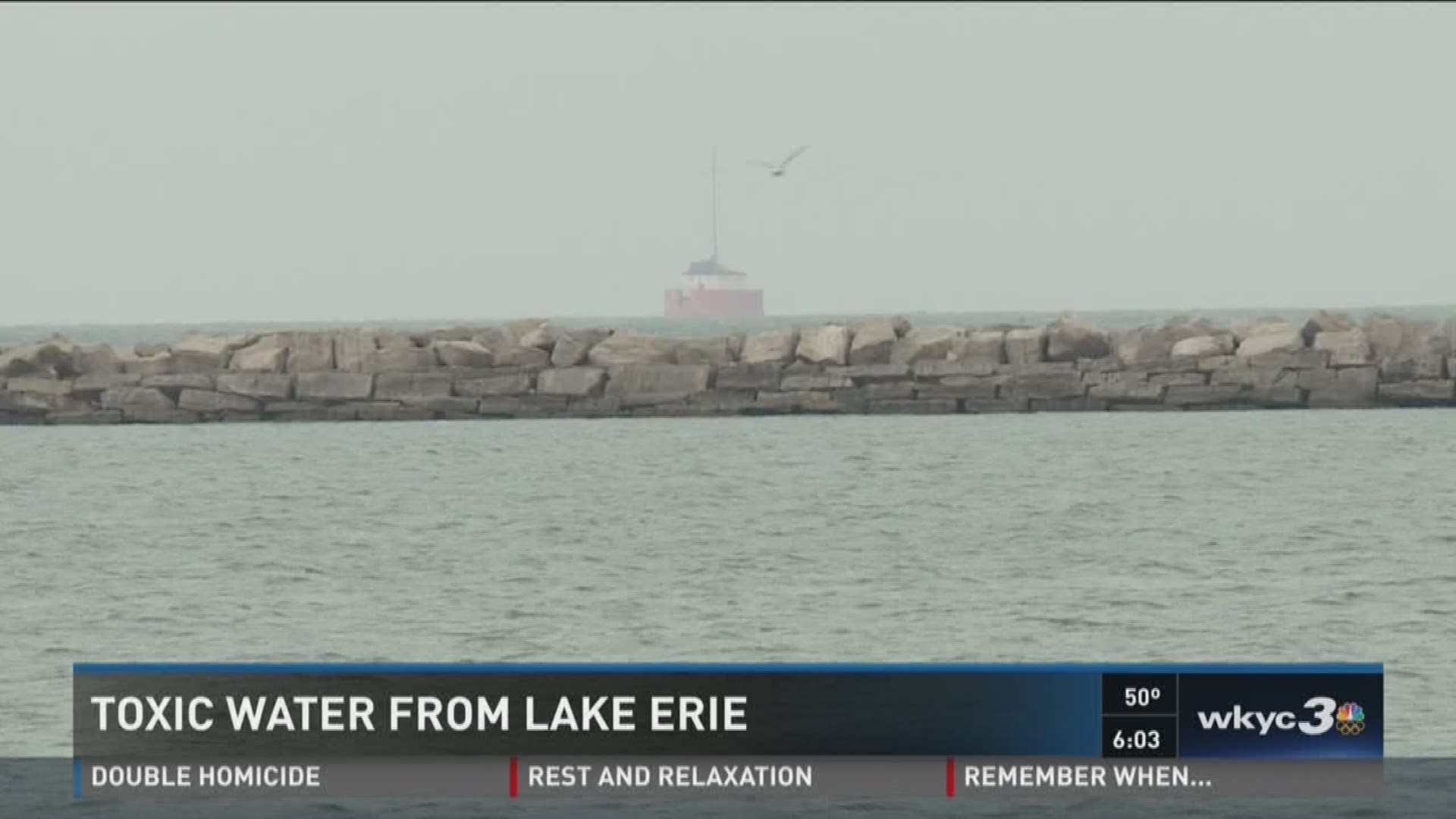CLEVELAND -- Cleveland’s water supply could soon be in trouble, at least according to the Ohio EPA.
They are warning that a toxic mass may be migrating closer to the city’s water supply.
Cleveland water officials called a rare news conference Monday to address the concern. The takeaway was that they are aware of the problem and on top of it.
“We continue to monitor the water coming into the treatment plant, the raw water from the lake, and we monitor the treated water as it comes out,” Commissioner Alex Margevicius said. “We are doing all those things to make sure the water is of the highest quality.”
According to the EPA a poisonous mass, about two miles by two miles, is at the bottom of the lake in a section known as Area 1.
The region is about 5 miles from an intake pipe used to feed water into the Nottingham Treatment Plant on the city’s east side.
Officials say the so-called “blob” is the result of material dredged from the Cuyahoga River, then dumped into the lake several decades ago.
They are not sure how quickly it is moving or if it may ever reach the pipe.
“The water is safe, we’ve tested the water,” Scott Moegling, Cleveland Water Quality Manager, said. “I want to get across that even if we were to get material showing up in our raw water, we have more than adequate treatment.”
He said chemicals currently being used to treat the raw water might then be used in greater amounts.
If untreated, however, the dangers from the toxic pollutants, otherwise known as PCB’s, are real. They have been linked to cancer, pregnancy problems and hormone imbalance.
The news comes amid what is already an intense legal battle between the EPA and the Army Corps of Engineers over dredging and what to do with waste from the Cuyahoga.
The Army Corps of Engineers released the following statement in response to the allegations.
"Lake Erie at one time was utilized for many types of industrial disposal practices that would not be acceptable today under the Clean Water Act. While the Corps of Engineers will not characterize and address contaminants of unknown sources in the entire lake bottom, it will support as appropriate any efforts by Ohio, as the owner of the lake bottom, to investigate the source of the contaminants and build a science-based understanding of their impacts."

